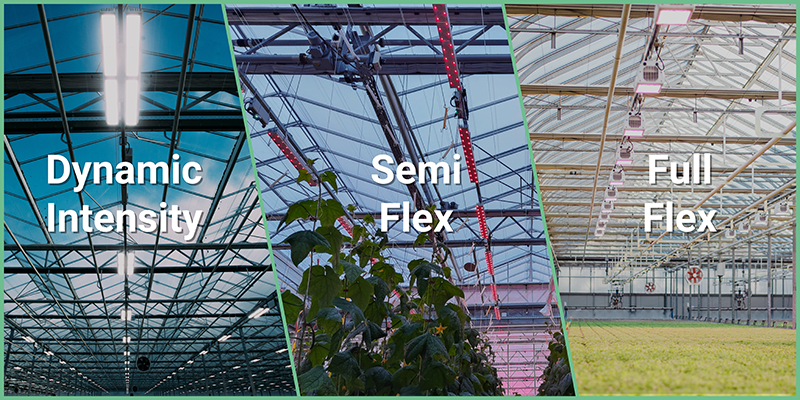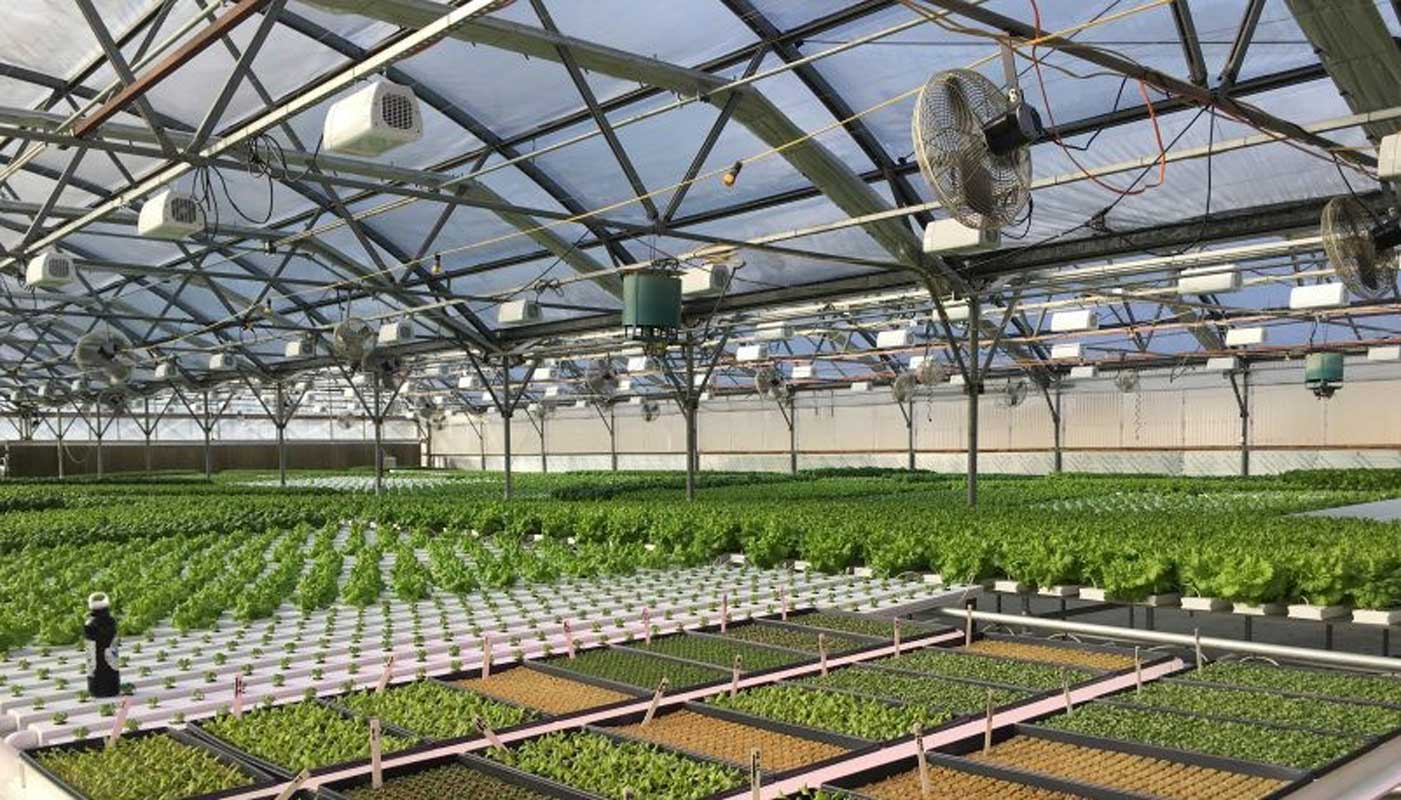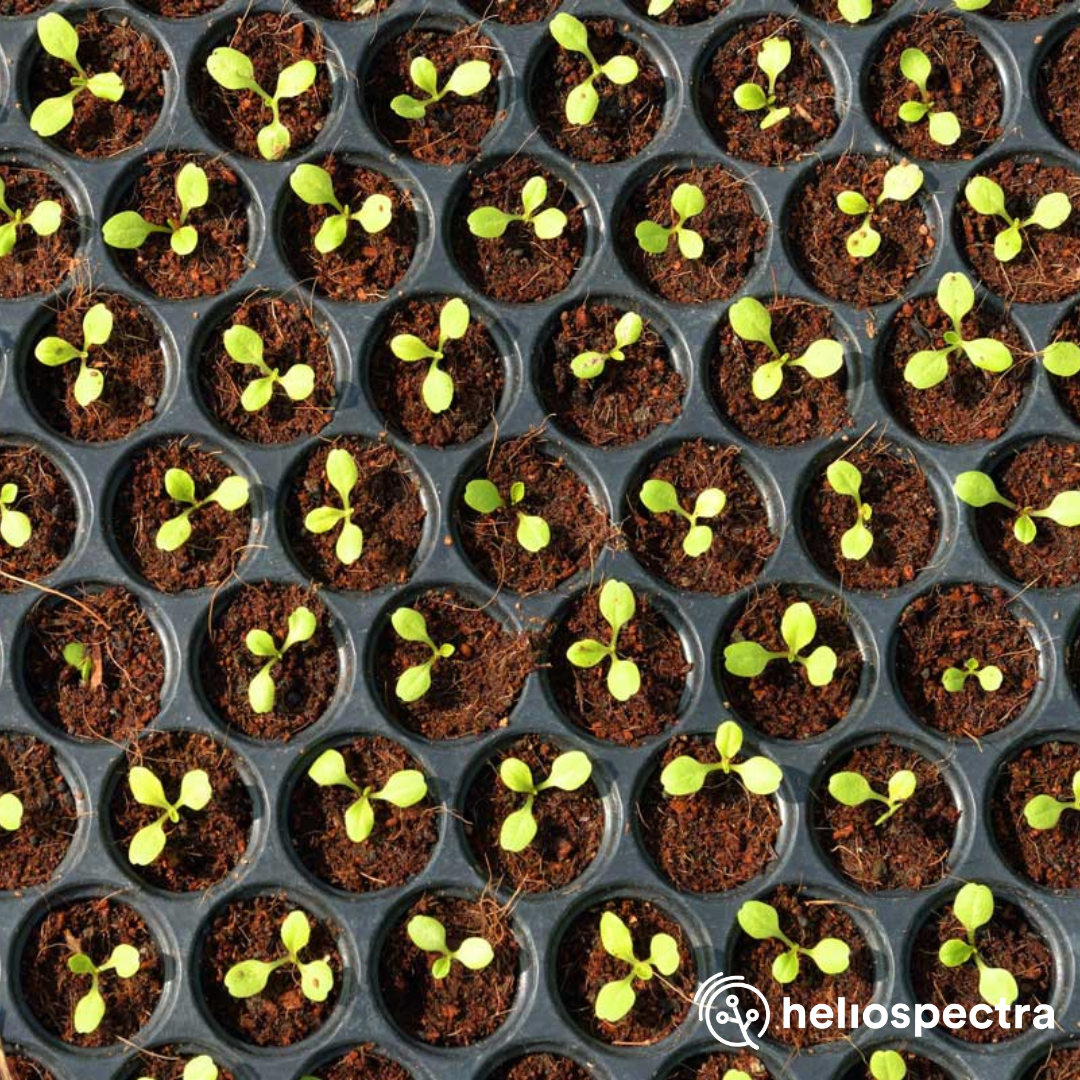Research
Articles
The ability to control light is a grower’s most powerful tool. A smart LED grow light system can provide a business advantage, by producing the right amount of light and even light at specific wavelengths chosen to match the needs of both plants and growers.
Light quality refers to the colors of light, or the spectrum provided to your plants. The mix of colors in light strongly influences plant development. The blue, green and red spectral range (400-700 nm) is referred to as PAR (photosynthetically active radiation). The most effective and efficient areas of the spectrum for driving photosynthesis are highest in the red region (600-700 nm), followed by blue (400-500 nm) and then green (500-600 nm). While PAR represents the range of light that plants use for photosynthesis, light outside of PAR, including far-red (700-800 nm), is also of importance to plant development, from plant architecture, to speed up growth and promoting flowering.
Far-Red Light
Far-red light can be defined as photons with wavelengths between 700 and 800 nm. This waveband is not considered photosynthetically active (however there is ongoing research that might shift this conclusion) but far-red light does influence growth. Far-red radiation has a major effect on extension growth, meaning it influences the size of leaves, the length of stems and ultimately, the height of plants.
Plants have different kinds of receptors that perceive the light quality to which they are exposed. Phytochrome is one of these receptors and is particularly sensitive to the amount of red light relative to the amount of far-red light. Plants absorb most of the red (R) light available to them and reflect or transmit most of the far-red (FR) light, which gives a lower R:FR ratio. A decrease in the R:FR ratio gives plants a signal that there are competing plants present. Plants respond to this by altering their growth, and stems, leaves and petioles elongate to capture more light. The R:FR can also influence flowering, especially in long-day plants. Studies have shown that some plants flower earlier when the light that is used to provide the long day has a moderate-to-low R:FR ratio. While a high R:FR ratio can delay flowering in some crops.
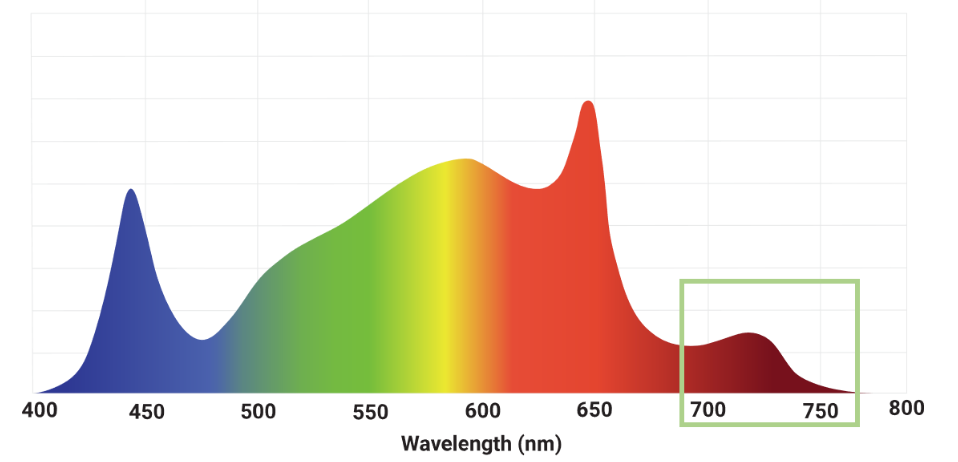
Fig 1. Broad spectrum 400-800 nm. PAR light 400-700 nm and FR 700-800 nm.
Far-red light plays an important role in regulation of flowering
In nature, reproduction of plants must follow seasons. The exception is species growing at the equator. Many (but not all) plant species regulate their flowering time according to the length of the night. The species and varieties which flower in late spring and summer, when the nights are short, are called long-day plants. Species and varieties which flower with longer nights are called short day-plants. Because plants use the same system to sense the length of the night as they use to sense the presence of far-red light, flowering of photoperiod sensitive plants can be regulated by using LED lights with different red to FR ratios. For example, flowering of short-day plants can be inhibited by day extension with light having high red to FR ratio. Night interruption with lights of FR only does not inhibit flowering, and in some species such treatment can enhance flower set (e.g. Craig and Runkle, 2013).
In many long-day plants, the presence of FR in a grow light spectrum substantially shortens the time needed for flowers to initiate and set in comparison to plants grown under lights without FR. It happens because a mixture of FR radiation increases plant size and photosynthesis, and thus allows plants to gather more energy for reproduction (Park and Runkle, 2017). There are plant species and varieties which do not flower at all if grown under a grow light without FR in the spectrum.
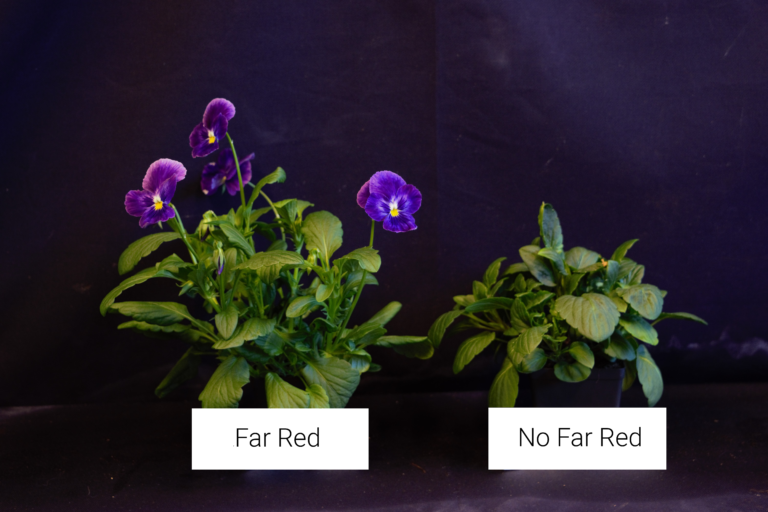
Fig 2. Pansies grown with and without FR light in the grow spectrum.
(Research trials and photo by Ida Fällström and Heliospectra Plant Lab team)
Far-Red Application Timing
FR can be provided to your plants in various ways. We evaluated end of day (EOD) FR and constant FR in the spectrum. By adding far-red at the end of the day you will be able to use less energy, so there are potential for energy savings while achieving FR crop responses.
We had earlier experienced that pansy plants had more open flowers earlier when grown under far-red. We wanted to see what would happen if we applied FR light at the end of day (EOD). We grew mini pansy plants under three different treatments, all with the same light intensity and spectral composition within PAR. One plant had only PAR light, one had FR added to the spectrum, and one had PAR and 30 minutes of EOD FR.
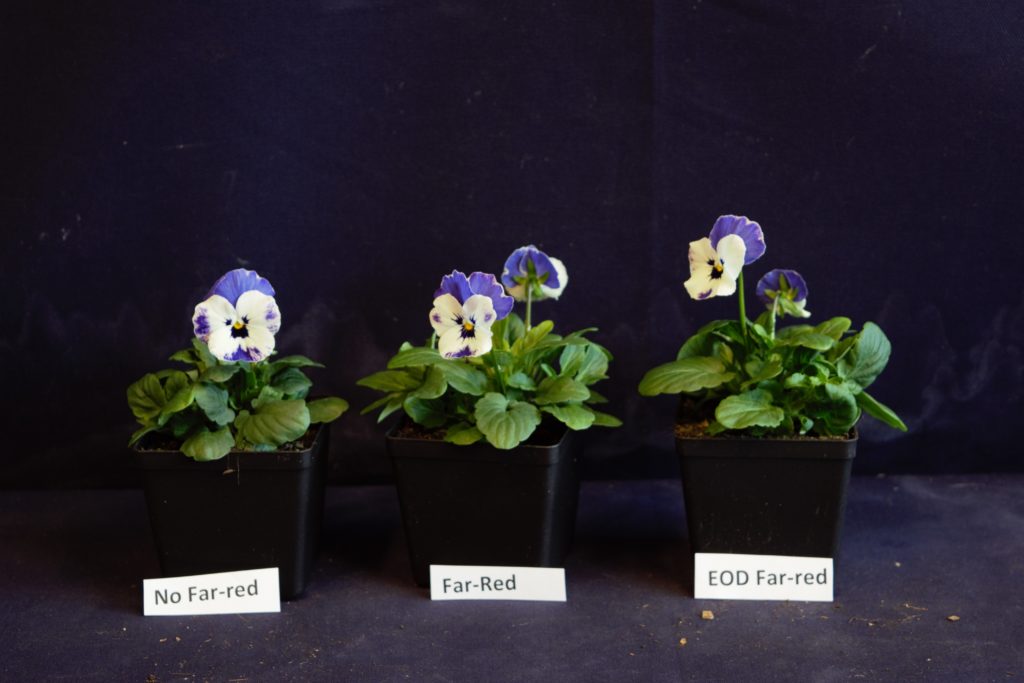
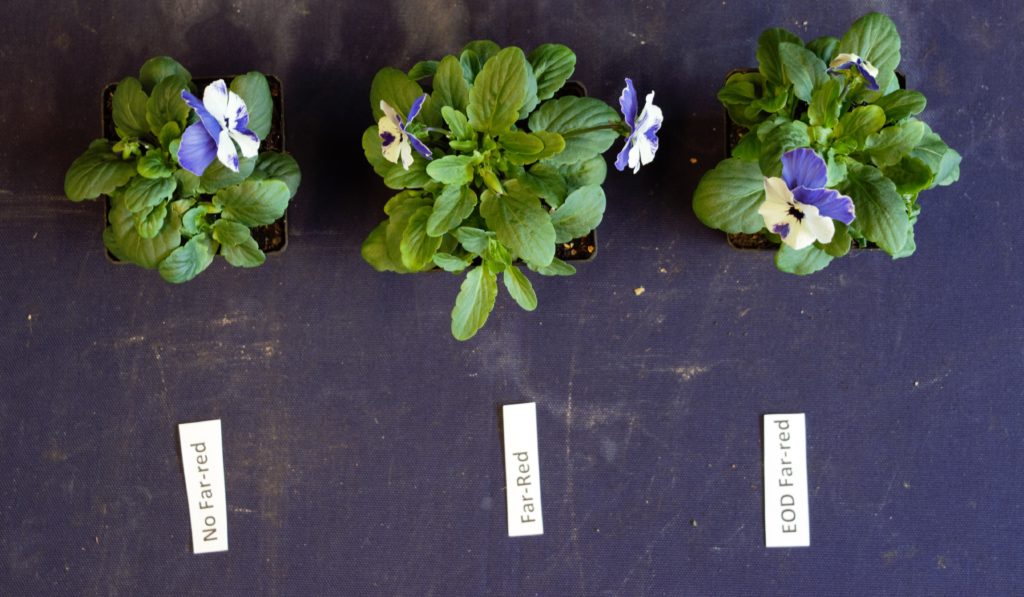
All pansies grown under far-red light had open flowers earlier and visually larger rosettes. The plants were inspected when all had at least one open flower. Both FR-treated plants had more open flowers, higher stems, larger rosette diameters and taller rosettes than the plant grown without far-red, while flower width and flower height seemed to be similar.
Far-red reported result on cut flower
Far-red positive effects on crop productions have been reported in cut flowers. By adding far-red for freesia resulted in faster flowering. Up to 12 days higher cultivation speed has been reported for Lilies, Orientals and OT varieties, and better vase life.
Research on cut chrysanthemums shown that with EOD FR stem elongation was already observed after two weeks while stem weight was not affected. Also, EOD FR results in longer flowering shoots and flowers were harvested two days earlier than grown without EOD FR.
The stems of marigold is also responding to far-red and can be used to control stem length with the greates height found under EOD FR.
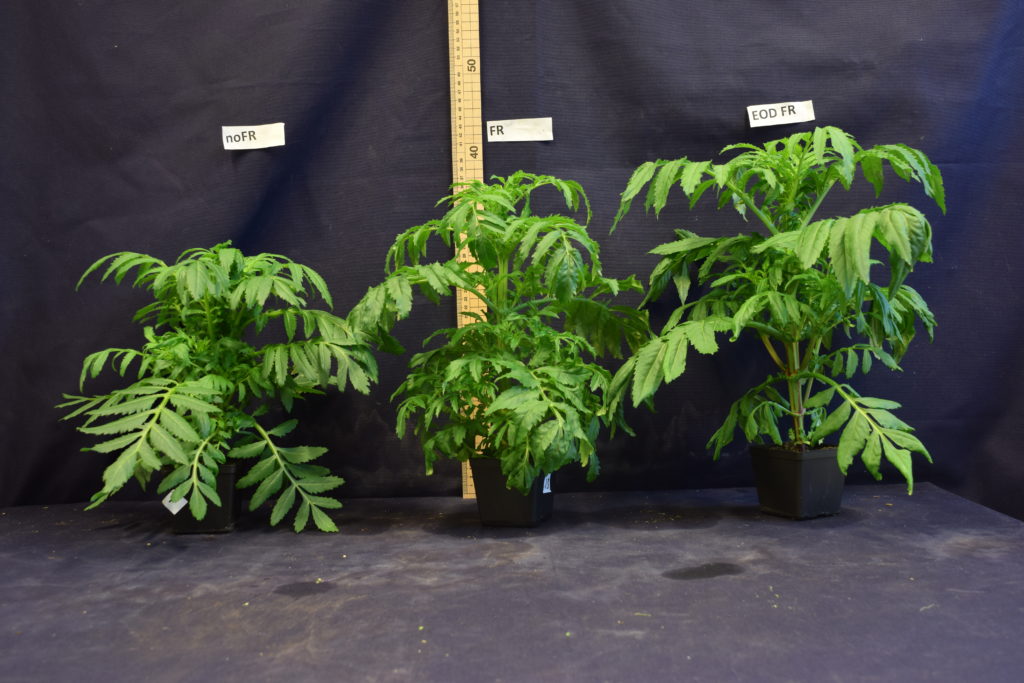
Dynamic lighting
Dynamic lighting allows the user to change the output from the lamp with respect to intensity and/or spectral quality. There are several ways to work with dynamic lighting:
- Light intensity can be changed by dimming – scheduled events.
- Light intensity can be changed by smart control – sensors to maintain target DLI.
- Light spectrum can be altered – using only one dynamic fixture.
By having a dynamic lighting solution, it is possible to adjust the light intensity to the shoulder part of the day (sun raise/ sun set) by dimming down/up the light levels. This can ensure to maintain a good light level within your production but not over-light when not wanted, this can give an energy saving. By adding smart control with sensors, the supplemental light use is regulated to reach Daily Light Integral (DLI).
Depending on the growth goal there are different ways to work with dynamic spectrum, when to apply which spectrum. One example to work whit far-red. Dynamic Far-red – by altering the R:FR ratio growers can affect the morphology of their crop. Stimulate stem length in cut flowers, increase internodal spacing, the length of trusses.
Control Your Strategy
It is always recommended that you consult specialists, such as our helioCARE™ plant and light experts, to customize a lighting strategy for your particular crops and cultivation goals. They can also help control and automate your lighting strategies, using our helioCORE™ technology. To make sure your plants always receive the light they need, your energy usage is always optimized, and your desired crop and business outcomes are consistently achieved year-round. Ready to know more?
Let's talk!
References
Runkle, E. (2016, May). A Closer Look at Far-Red Radiation. Retrieved December 3, 2021,
from https://gpnmag.com/article/a-closer-look-at-far-red-radiation/
Runkle, E. (2011, May). The R to FR Ratio. https://gpnmag.com/article/r-fr-ratio/
Craig D.S., E.S. Runkle (2013) A Moderate to High Red to Far-red Light Ratio from Light-emitting Diodes Controls Flowering of Short-day Plants. Biology 138:167-172 DOI:10.21273/jashs.138.3.167
Park, Yujin & Runkle, Erik. (2017). Far-red Radiation Promotes Growth of Seedlings by Increasing Leaf Expansion and Whole-plant Net Assimilation. Environmental and Experimental Botany. 136. 10.1016/j.envexpbot.2016.12.013.
Related content
Get in touch with us!
From custom light planning, to tailored quotes, and everything in between,
our team of horticulture experts are always ready to assist.




